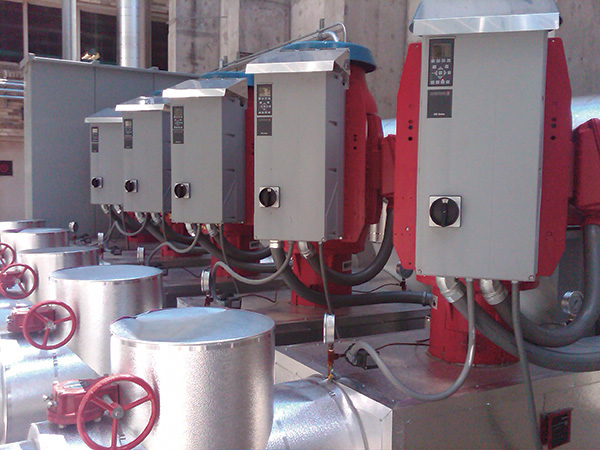
As we work through complex and trying circumstances, with large portions of the population self-isolating and dependent on building mechanical systems for safety and comfort, the world of heating, ventilation and air conditioning (HVAC) has seen numerous instances of people extending themselves, beyond the ordinary, in the service of others.
At the same time, where installations of new and retrofit systems continue, examples of project case studies provide a glimpse of the performance improvements and cost savings available through application of advanced technologies.
Much has been said and written on the topic of the COVID-19 pandemic, so no further analysis is needed here. However, the changes brought on by that crisis have also changed the world of service. While the underlying concept, and the values-based requirements of putting ourselves in the service of others remain unchanged, the delivery of service, over the short and medium term, will be quite different. These changes involve and include a heightened awareness of the need for safety among frontline service personnel, as well as frontline managers and operators.
Some of the more basic changes involve increased use of personal protection equipment (PPE) in day-to-day work. Masks, gloves, protective visors, cleaning supplies and detailed protocols for usage are now commonplace. More advanced service protocols include detailed questionnaires to be administered prior to the start of a service.
Some questions may be helpful to establish the need for a service call, or the circumstances for that call.
- Can we remotely offer support to fix this problem?
- Can the work be scheduled during low-occupancy times so we can follow safe social distancing practices?
Some questions can be posed to establish the nature of the work environment:
- Is the room where the work is to be performed isolated from any contaminated areas with separate access from the outside?
- Is everyone at the site practicing social distancing, maintaining a distance of 6 feet or more at all times?
Lastly, some more obvious questions will be helpful to establish the risk level while personnel are visiting a worksite:
- Is there anyone on the premises who is, or might be, ill?
- Has there been a confirmed case of COVID-19 at the address?
Some specific changes to work site protocols might include:
- Carrying water and soap to wash hands before and after the call, and using hand sanitizer as an extra level of protection
- If possible, entering and exiting a building using the external door nearest to the equipment
- Wiping down touchable surfaces as you go
- Omitting the service step of obtaining a signature in person or using digital signature technology
- Cleaning all tools, tablets and other devices with soap, water and/or sanitizer after completing a job visit; sanitizing equipment or parts before removal; sanitizing equipment after installation
- Disposing of potentially contaminated PPE safely
Changes in Services
While there are changes that can be made to adjust work practices and make customer service calls safe for all parties, the increased need for safety and social distancing, combined with the potential for increased convenience has led to increased use of digital technologies to provide customer service. Examples from the world of HVAC pumping include cloud-based subscription services that leverage the intelligence and connectivity of installed pumps to manage performance, based on real-time insights.
In other scenarios, existing digital tools or mobile apps can be used to provide remote assistance on-site. One such tool allows an on-site operator to point a camera at the touchscreen integrated into a pump. Using the phone camera and the app, a remote service technician can indicate the keys to press. With guidance from a remote technician, an on-site operator can complete diagnostic checks and make any changes required to pumps settings. It is like having a trained technician guiding users through the problems at hand. Using available technologies in combination, the customer can receive the service they need, at a safe distance.
Beyond the maintenance and repair requirements, digital services are increasingly employed to assist with performance and optimization. Cloud-based performance tracking and data gathering support better practices in asset management and an approach to HVAC optimizationSome services monitor s .
Emergency Response
The increased focus on health care and the strain on health care resources has elevated the importance of HVAC and indoor comfort in these environments. In addition, where many businesses and manufacturing facilities have been identified as essential services, the function of HVAC systems in those buildings becomes even more important.
In the face of increased need for continuous HVAC operation in critical or essential environments, more manufacturers are now providing 24/7 support and rapid response on-site service, either directly or through networks of licensed service organizations.
As businesses react to changes in customer needs and changes in a competitive environment, success will depend at least in part on the types of services provided and the service mentality espoused in support of product solutions. Industry professionals can extend themselves beyond the ordinary, and consciously put themselves in the service of others. It matters.

